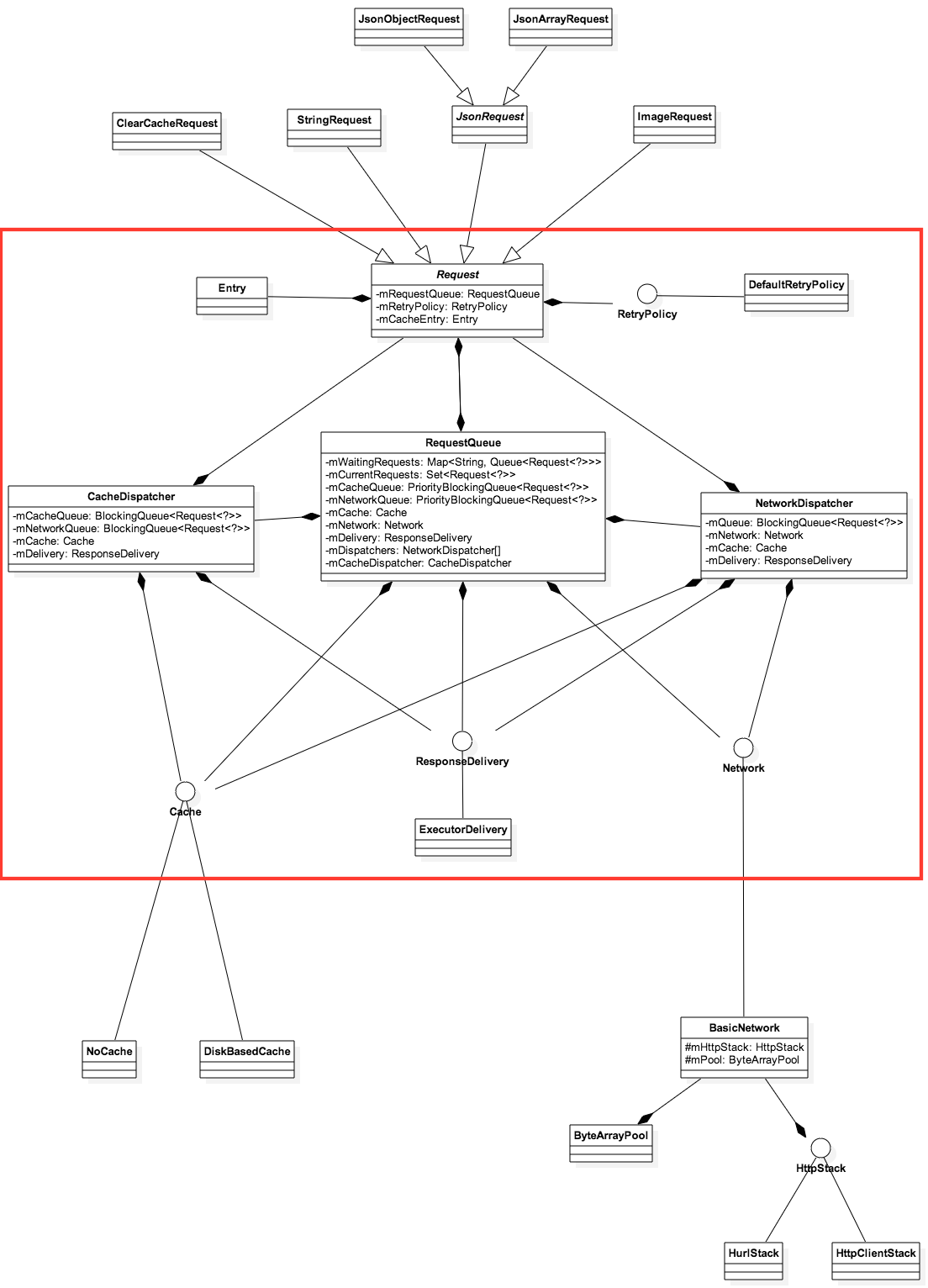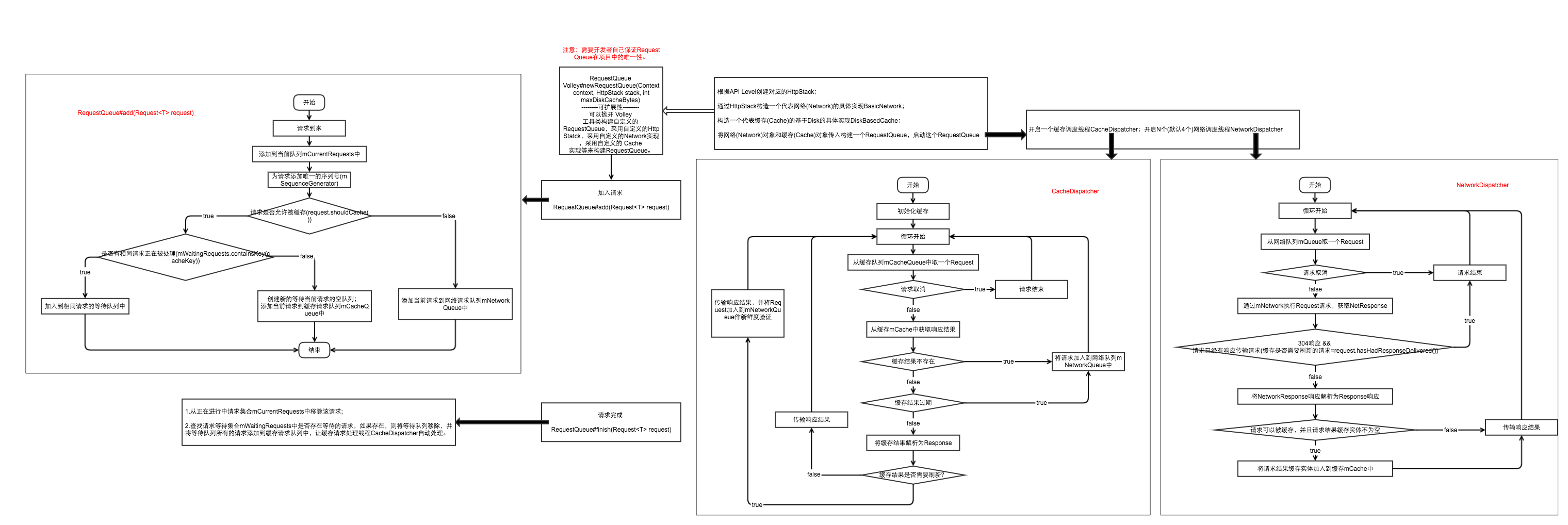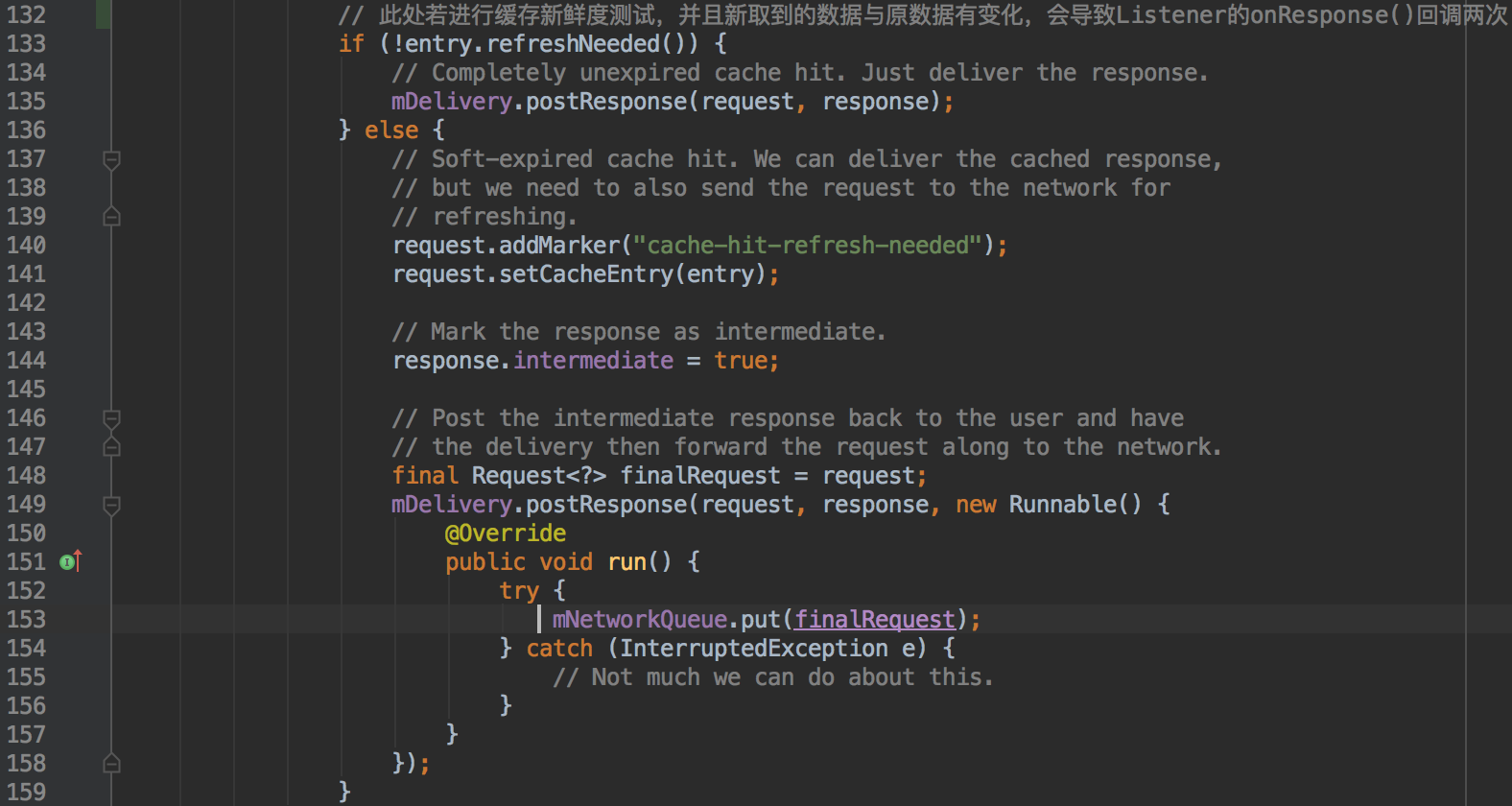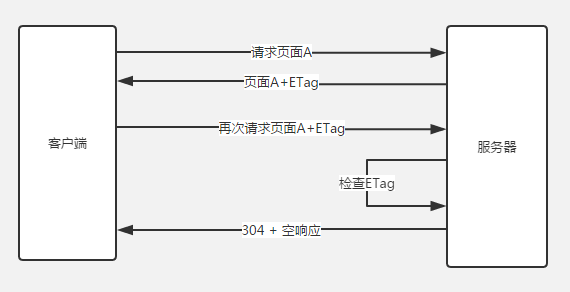public class HttpHeaderParser {
/** 通过网络响应中的缓存控制 Header 和 Body 内容,构建缓存实体。
*
* 1.没有处理Last-Modify首部,而是处理存储了Date首部,并在后续的新鲜度验证时,
* 使用Date来构建If-Modified-Since。 这与 Http 1.1 的语义有些违背。
* 2.计算过期时间,Cache-Control 首部优先于 Expires 首部。
* Extracts a {@link Cache.Entry} from a {@link NetworkResponse}.
*
* @param response The network response to parse headers from
* @return a cache entry for the given response, or null if the response is not cacheable.
*/
public static Cache.Entry parseCacheHeaders(NetworkResponse response) {
long now = System.currentTimeMillis();
Map<String, String> headers = response.headers;
long serverDate = 0;
long lastModified = 0;
long serverExpires = 0;
long softExpire = 0;
long finalExpire = 0;
long maxAge = 0;
// 陈旧而重新验证的时间
long staleWhileRevalidate = 0;
boolean hasCacheControl = false;
// 必须重新验证
boolean mustRevalidate = false;
String serverEtag = null;
String headerValue;
headerValue = headers.get("Date");
if (headerValue != null) {
// 根据 Date 首部,获取响应生成时间
serverDate = parseDateAsEpoch(headerValue);
}
// 获取响应提的Cache缓存策略
headerValue = headers.get("Cache-Control");
if (headerValue != null) {
hasCacheControl = true;
String[] tokens = headerValue.split(",");
for (int i = 0; i < tokens.length; i++) {
String token = tokens[i].trim();
// 如果 Header 的 Cache-Control 字段含有no-cache或no-store表示不缓存
if (token.equals("no-cache") || token.equals("no-store")) {
return null;
} else if (token.startsWith("max-age=")) {
// 获取缓存的有效时间,单位是秒
try {
maxAge = Long.parseLong(token.substring(8));
} catch (Exception e) {
}
} else if (token.startsWith("stale-while-revalidate=")) {
// 是过了缓存时间后还可以继续使用缓存的时间,单位是秒
// 所以真正的缓存时间是“max-age=” + “stale-while-revalidate=”的总时间
// 但如果有“must-revalidate”或者“proxy-revalidate”字段则过了缓存时间缓存就立即请求服务器
try {
staleWhileRevalidate = Long.parseLong(token.substring(23));
} catch (Exception e) {
}
} else if (token.equals("must-revalidate") || token.equals("proxy-revalidate")) {
// 过了缓存时间就立刻请求服务器
mustRevalidate = true;
}
}
}
// 缓存有效期的时间点,和Cache-Control意思一致,为兼容HTTP1.0和HTTP1.1才会使用该字段
// 如果有Cache-Control,优先使用Cache-Control
headerValue = headers.get("Expires");
if (headerValue != null) {
serverExpires = parseDateAsEpoch(headerValue);
}
// 服务器最后修改的时间
headerValue = headers.get("Last-Modified");
if (headerValue != null) {
lastModified = parseDateAsEpoch(headerValue);
}
// 根据 ETag 首部,获取响应实体标签。
// 该字段是服务器资源的唯一标识符,与"Last-Modified"配合使用
// 因为"Last-Modified"只能精确到秒,如果"ETag"与服务器一致,再判断"Last-Modified"
// 防止一秒内服务器多次修改而导致数据不准确的问题
serverEtag = headers.get("ETag");
// Cache-Control takes precedence over an Expires header, even if both exist and Expires
// is more restrictive.
// 根据 Cache-Control 和 Expires 首部,计算出缓存的过期时间,和缓存的新鲜度时间
if (hasCacheControl) {
// 最精确的缓存过期时间softExpire=现在的时间+缓存可使用的最大时间
softExpire = now + maxAge * 1000;
// 最终缓存过期时间finalExpire,还要判断mustRevalidate参数
// 如果mustRevalidate=false
// 最终缓存过期时间finalExpire=最精确的缓存过期时间softExpire+缓存过期后还可以继续使用的时间
finalExpire = mustRevalidate
? softExpire
: softExpire + staleWhileRevalidate * 1000;
} else if (serverDate > 0 && serverExpires >= serverDate) {
// Default semantic for Expire header in HTTP specification is softExpire.
// 如果 响应生成时间点>0 && 缓存有效期的时间点>=响应生成时间点
// 最精确的缓存过期时间softExpire=现在的时间+(缓存有效期的时间点-响应生成时间点)
softExpire = now + (serverExpires - serverDate);
// 最终缓存过期时间finalExpire=最精确的缓存过期时间softExpire
finalExpire = softExpire;
}
Cache.Entry entry = new Cache.Entry();
entry.data = response.data;
entry.etag = serverEtag;
entry.softTtl = softExpire;
entry.ttl = finalExpire;
entry.serverDate = serverDate;
entry.lastModified = lastModified;
entry.responseHeaders = headers;
return entry;
}
/** 解析时间,将 RFC1123 的时间格式,解析成 epoch 时间
* Parse date in RFC1123 format, and return its value as epoch
*/
public static long parseDateAsEpoch(String dateStr) {
try {
// Parse date in RFC1123 format if this header contains one
return DateUtils.parseDate(dateStr).getTime();
} catch (DateParseException e) {
// Date in invalid format, fallback to 0
return 0;
}
}
/** 解析编码集,在 Content-Type 首部中获取编码集,如果没有找到,返回defaultCharset
* Retrieve a charset from headers
*
* @param headers An {@link java.util.Map} of headers
* @param defaultCharset Charset to return if none can be found
* @return Returns the charset specified in the Content-Type of this header,
* or the defaultCharset if none can be found.
*/
public static String parseCharset(Map<String, String> headers, String defaultCharset) {
String contentType = headers.get(HTTP.CONTENT_TYPE);
if (contentType != null) {
String[] params = contentType.split(";");
for (int i = 1; i < params.length; i++) {
String[] pair = params[i].trim().split("=");
if (pair.length == 2) {
if (pair[0].equals("charset")) {
return pair[1];
}
}
}
}
return defaultCharset;
}
/** 解析编码集,在 Content-Type 首部中获取编码集,如果没有找到,默认返回 ISO-8859-1
* Returns the charset specified in the Content-Type of this header,
* or the HTTP default (ISO-8859-1) if none can be found.
*/
public static String parseCharset(Map<String, String> headers) {
return parseCharset(headers, HTTP.DEFAULT_CONTENT_CHARSET);
}
}



